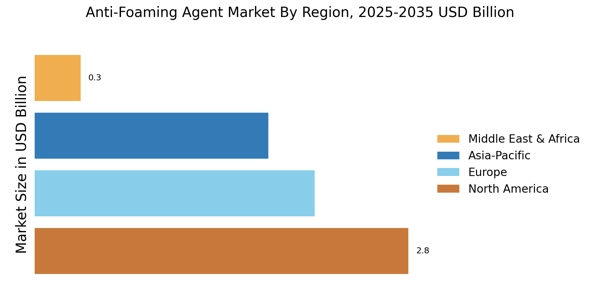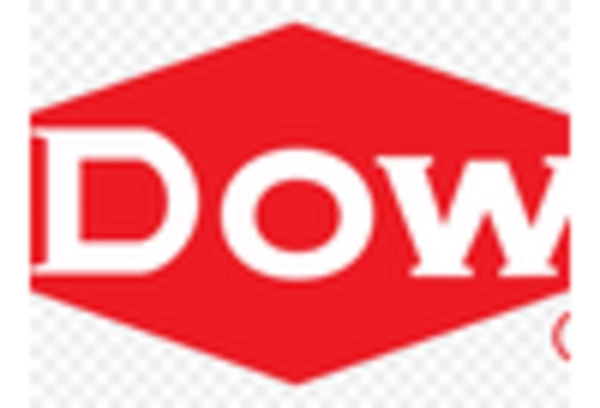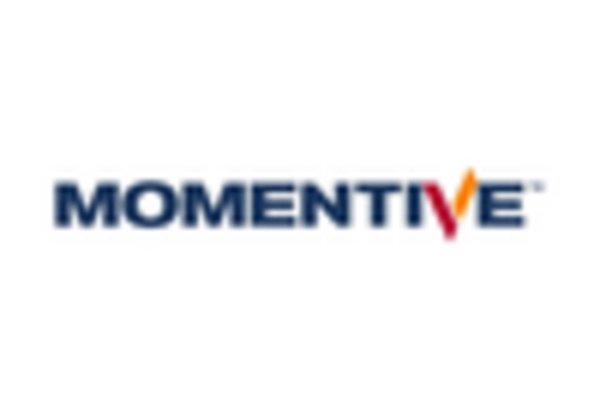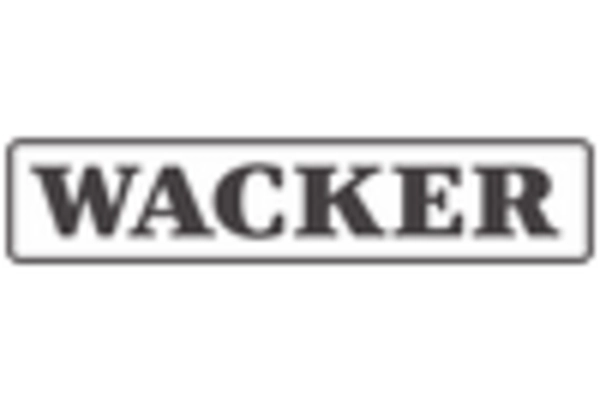Growth in Chemical Manufacturing
The Anti-Foaming Agent Market Industry is significantly influenced by the growth in chemical manufacturing. As various chemical processes often produce unwanted foam, the need for anti-foaming agents becomes paramount. Industries such as paints, coatings, and adhesives utilize these agents to ensure smooth production and enhance product performance. The chemical manufacturing sector is projected to expand, driven by increasing industrial activities and innovations in product formulations. This growth is expected to bolster the demand for anti-foaming agents, as manufacturers seek to optimize their processes and improve product quality. Market analysis suggests that the chemical sector represents a key driver for the anti-foaming agent market, with potential for substantial growth in the upcoming years.
Environmental Regulations and Compliance
The Anti-Foaming Agent Market Industry is also shaped by stringent environmental regulations and compliance requirements. As industries face increasing scrutiny regarding their environmental impact, the demand for eco-friendly anti-foaming agents is on the rise. Manufacturers are compelled to adopt sustainable practices, leading to the development of bio-based and biodegradable anti-foaming agents. This shift not only aligns with regulatory standards but also caters to the growing consumer preference for environmentally responsible products. Market data indicates that the eco-friendly segment of the anti-foaming agent market is expected to witness significant growth, reflecting a broader trend towards sustainability across various industries.
Rising Demand in Food and Beverage Sector
The Anti-Foaming Agent Market Industry experiences a notable surge in demand from the food and beverage sector. This sector increasingly requires anti-foaming agents to enhance product quality and maintain consistency during production processes. For instance, the use of anti-foaming agents in brewing and dairy applications is critical to prevent foam formation, which can lead to inefficiencies and product loss. As the food and beverage industry continues to expand, driven by changing consumer preferences and the need for high-quality products, the demand for effective anti-foaming solutions is likely to grow. Market data indicates that the food and beverage segment accounts for a substantial share of the overall anti-foaming agent market, suggesting a robust growth trajectory in the coming years.
Expansion of Wastewater Treatment Facilities
The Anti-Foaming Agent Market Industry is significantly impacted by the expansion of wastewater treatment facilities. As urbanization and industrialization accelerate, the need for effective wastewater management becomes critical. Anti-foaming agents are essential in these facilities to control foam formation during treatment processes, ensuring operational efficiency and compliance with environmental standards. The increasing investment in wastewater infrastructure is expected to drive the demand for anti-foaming agents, as municipalities and industries seek to enhance their treatment capabilities. Market projections indicate that the wastewater treatment segment will contribute substantially to the overall growth of the anti-foaming agent market, reflecting the importance of effective foam control in environmental management.
Technological Innovations in Product Development
Technological advancements play a crucial role in the Anti-Foaming Agent Market Industry, as innovations in product development lead to more effective and efficient solutions. The introduction of new formulations and application techniques enhances the performance of anti-foaming agents, making them suitable for a wider range of applications. For instance, advancements in nanotechnology and polymer science have resulted in the creation of specialized anti-foaming agents that offer superior performance in challenging environments. As industries continue to seek improved efficiency and cost-effectiveness, the demand for technologically advanced anti-foaming agents is likely to increase. This trend suggests a dynamic landscape for the anti-foaming agent market, driven by continuous innovation.


















Leave a Comment